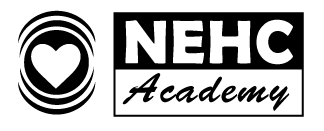| Angular Veins | Veins near the bridge of the nose, receiving blood from regions around the eyes and root of the nose. |
| Azygos Vein | A longitudinal vessel on the right side running alongside the vertebral column, involved in draining the thoracic wall and some abdominal structures into the superior vena cava. |
| Brachiocephalic Veins | Formed by the union of the internal jugular and subclavian veins, these veins receive blood from the head, neck, and arms. |
| Calf Muscle Pump | The mechanism by which the calf muscles assist in venous blood flow, compressing deep veins in the leg during contraction to push blood upwards. |
| Deep Vein Thrombosis (DVT) | A condition characterized by the formation of a blood clot within a deep vein, typically in the leg, which can obstruct blood flow and lead to complications like pulmonary embolism. |
| External Jugular Vein | A vein that drains the scalp and deep parts of the face, descending over the sternocleidomastoid muscle. |
| Facial Vein | A major venous channel running vertically down the face, responsible for draining venous blood from superficial areas. |
| Fenestrated Capillary | A type of capillary with pores in its endothelial lining, allowing for increased permeability and facilitating the transfer of small molecules. |
| Great Saphenous Vein | The longest vein in the body, running from the foot up the inside of the leg to the groin, where it drains into the femoral vein. |
| Inferior Vena Cava | The large vein that ascends along the spine, transporting blood from the lower parts of the body to the heart. |
| Internal Jugular Vein | A larger, deeper vein that runs medial to the sternocleidomastoid muscle, carrying venous blood from the brain, superficial face, and neck back toward the heart. |
| Popliteal Vein | A deep vein behind the knee, receiving blood from the lower leg and continuing upward to become the femoral vein in the thigh. |
| Pulmonary Embolism | A potentially life-threatening condition that occurs when a blood clot travels to the lungs and blocks one of the pulmonary arteries. |
| Subclavian Vein | Runs under the clavicle, acting as a major conduit for blood returning to the heart from the upper extremities and head. |
| Superior Vena Cava | A large vein that carries blood from the upper body into the right atrium of the heart. |
| Varicose Veins | Dilated, twisted veins that result from venous insufficiency, typically occurring in the legs. |
| Venous Insufficiency | A condition where the veins have trouble sending blood from the limbs back to the heart, often leading to varicose veins and other complications. |
| Venous Valve | A structure within veins that ensures one-way blood flow back to the heart, preventing backflow. |
